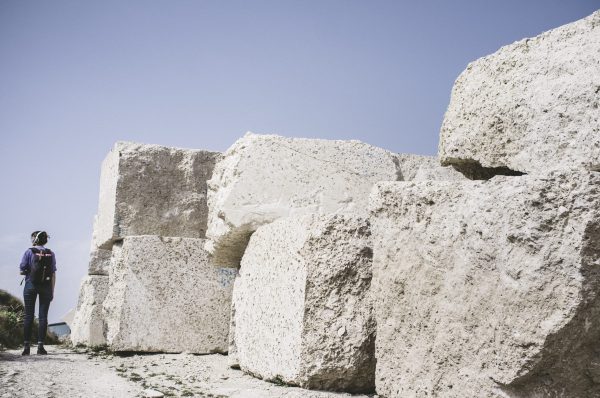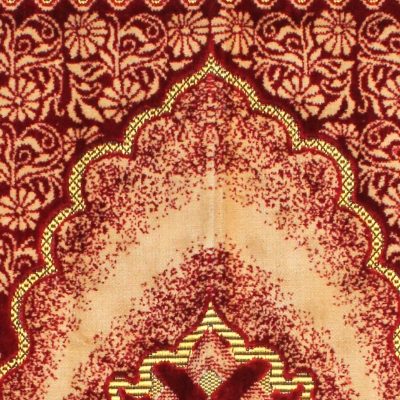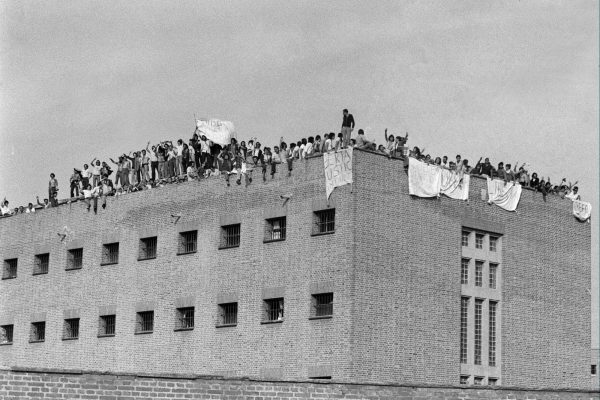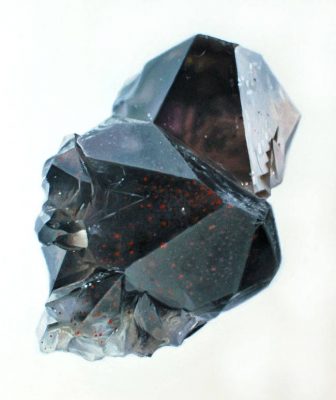It is a story told in every Creole family I know in Mauritius. It is often narrated during a long drive: a window rolls down and a hand gestures to stanzas upon stanzas of sugarcane, or bungalows on the coast, or valleys now privately owned. ‘This used to be ours,’ says a parent. ‘They took it. We lost it.’
There are several common stories of the taking. The Creole child of a white man is forbidden from inheriting his property. An illiterate widow signs acres of land to corrupt notaries, who promise that her progeny will be taken care of. Families are chased out of their homes.
These are old stories, learned by rote and handed down like a relic, a warning: Look at all we had. Look: you could lose everything too.
With time and pain these stories often become nebulous – sometimes on purpose.
My mother’s way of coping with her family history is near-absolute silence; she fears, perhaps, that poverty and stigma will return to plague her once it is spoken out loud. Details of her life are sparse and often excruciating. A lower middle-class upbringing. The shame of having bronze skin with a white surname. On my mother’s side of the family, my great-grandfather was a wealthy white man, who had many mistresses; one was a woman of African descent, his maid. They had several children together and eventually married. My great-grandmother loved her husband fastidiously. They brought up their children in the big house; my grandfather and his sisters carried the white name, though, according to my mother, it would have been a kindness if my great-grandfather had given them my great-grandmother’s maiden name instead. My great-grandmother would hide in another part of the house when my great-grandfather’s white friends would drive up the Montagne Longue mountain to see him.
My mother took me to Montagne Longue only once, when I was around five years old. I remember that she was with her eldest brother, and that we were in the region to visit a friend. My uncle probably decided we should look at ‘our’ land again, though there was no former family home to visit, no graves. It was late afternoon, and we walked through golden, parched grass which reached up to my knees. The crest of the mountain surrounded us. My uncle pointed to the cascading hills below, covered in pineapple plantations. ‘All of this was ours. Covered in pineapple like it was back in the day, but also in vanilla and cane.’
These lavish tracts of land were now lost, but my mother wouldn’t tell me exactly how. Over the years, and after putting many impertinent questions to family members, I’ve gathered fragments of a story of dispossession: an eccentric old man, with many eminent French friends, who was estranged from his kin and society once he’d decided that his Black son would carry his name; his land taken from him by his white family and business associates, while other parts of the land were lost to debt. There’s a family tree that my uncle was able to recover: it was drawn by my great-grandfather’s white family and their descendants. Some of the branches were drawn to look like fingers; at my great-grandfather’s name there’s an amputation, a cut to mark the place where whiteness ends.
The documents that would tell the story of our inheritance are also lost, according to my mother. When my grandfather died my mother took care of the funeral and the household expenses; my grandmother thoroughly cleaned the house and disposed of old papers that she thought weren’t of any value. My mother was too wrecked by grief to take much notice of what she was cleaning, but she suspects now that this is when the papers disappeared – parchments inscribed with plans and letters in her grandfather’s hand that she remembers seeing as a child. The papers were sold or thrown away; possibly used as scrap paper to envelop gato pima sold by the road.
Until I heard of Danielle Tancrel’s fight to reclaim her land I thought that the stories of Creole dispossession were mundane, irrevocable facts of life. I met her through Jean-Clément Cangy, a family friend whose work as a journalist, researcher and writer has produced invaluable material on Creole culture and history. Jean-Clement and Danielle wrote the book Spoliation des terres, Crime contre les droits humains fondamentaux [Spoliation of land and crimes against fundamental human rights] in 2019, which provides an overview of cases of land dispossession as well as their historical context, tracing the changes in land ownership laws throughout the centuries.
Danielle is a very different woman to my mother. She has no interest in ossified memory.
She lives a few minutes away from the small village of St Julien, in the district of Flacq. Her house is surrounded by sugarcane fields. When I walk into her living room, I see her ancestry laid out in hundreds of papers classified into boxes. These documents sketch the initial story of her family.
‘My grandfather and father worked for the sugar company. Their factory is just there,’ Danielle says, pointing to thick smoke rising about three miles away. The company is one of the largest sugar producers in Mauritius.
‘My father was a mechanic. He was also a handyman for the white management, he organised their grand dinners in their bungalows. One day, while he was working, one of the white men asked his name. Upon learning it he was shocked and said, “the Tancrels have plenty of land right here!” My father then spoke to his boss. His boss said, “I can’t help you. You have to seek help from higher up.” When my father came home that night and told us what he’d heard, we had no idea what to do next.’
‘My brother went to the archives to find out if all this was true sometime in 2006. He found our family name on page 666 of the civil status records for 1795–1815. I told him it was the devil’s number. Maybe that’s why my family suffered so much. My grandfather was raised only by his mother. He never talked about his childhood. He was illiterate. My family was very poor. My mother would cook the vine leaves that grew in the garden for us to eat almost every day. I visited the archives too, and soon grew obsessed. I wanted to know the truth about my family. I spent all my weekends there, my holidays from work. I photocopied every document with the Tancrel name on it,’ she says, handing me another pile of documents to look at. We go through them one by one, interpreting the thin cursive, deciphering eighteenth-century French. After an hour she brings out cookies and juice for me. She takes silent note of my penchant for the chocolate ones and serves me some more.
I marvel at the fact that she’s been able to trace her family back through eight generations. ‘It was really difficult. When I asked for my great-grandfather’s birth certificate at the Civil Status Office, they said they didn’t have it. My childhood friend worked at the National Archives. She rang them up and pestered them. They eventually gave it to me. In another office, they tried to prevent me from accessing notarial documents. When they understood that I was just looking for my ancestors, they let me in. The staff told me that they’d caught lawyers and notaries ripping up papers here before.’
Danielle was able to trace a deed granting 86 arpents (the equivalent of approximately one acre) to Antoine Tancrel, her direct ancestor, in 1783. She examined the map detailing the area: the land, covered in virgin forest and in cane, is claimed by the sugar company. She wasn’t sure what she could do.
But then came the Truth and Justice Commission of Mauritius. Launched in 2009, it was the first truth commission in the world to independently investigate the legacy of slavery and indenture. In a six-volume report, it offered a revisionist account of the island’s history, detailed the racism and economic oppression faced by descendants of slaves, and proposed recommendations for reparations. The volumes are strewn with hundreds of stories of lost land; the second volume is entirely devoted to land reform and cases of dispossession. One tale in particular is legion: ‘the sugar company stole it.’
The Kreol word for sugar company is tablisman. It is derived from the French établissement agricole, or agricultural establishment. French colonists were granted acres of land to grow variegated crops in the eighteenth century; after the British took over Mauritius in 1810, land was used almost exclusively to grow sugarcane, and sugar companies emerged in their hundreds. A typical establishment would consist of a colonial home; buildings used to house enslaved men and women, then later freedmen and indentured labourers; a sugar factory not too far away; a chapel, and then a Hindu temple, all surrounded by fields of cane. With time, these sugar companies consolidated and turned into conglomerates in the twentieth and twenty-first century. They now dominate the private sector.
Four-hundred or so official claims were made to the Commission. Danielle was among the first to present her case. The Commission advised her to contact a land surveyor, who studied her dossier and drew up a report in July 2011. The surveyor’s report described how the land isn’t found in the company’s title deeds, their sugar estate records or in their mortgage files. The surveyor stated that the land is covered in sugarcane and is occupied by the company ‘in utter bad faith’. The Commission then summoned the company’s Chief Executive Officer in September 2011. He couldn’t produce any evidence supporting the company’s claim to the land, except to say that it had been under ‘continuous and uninterrupted occupation’ by them since 1938. The Commission told Danielle that she should go to court with her case, as it was clear that she’d been dispossessed.
‘The first time I spoke to the CEO in 2011, he told me that he would not negotiate with my family, and he awaited the report of the Commission. Then he died a year after the Commission gave its verdict. The following year, I thought I would try again. I gathered up my strength and rang one of the company directors. He answered in a harsh voice. I said, “Please don’t intimidate me. It’s taken all my courage to talk to you.” I explained my case to him and sent the files. He said, “I’d like to know what the Court of Justice thinks of this.” I then sent the company a formal legal notice asking them for my land back. They said the claim was “baseless and unjustified”. They can pay the best lawyers and keep deferring the case until my money runs out. And I have no money to continue the legal fight.’
In the days that follow our meeting I send Danielle several emails. The Truth and Justice Commission outlines her case in the report, and when I read through it I find a possible error. Their verdict states that ‘it seems to be a typical case of dispossession by sugar estates, of land belonging to a French colon, who had children with a woman slave.’ The Commission suggests that the dispossession happened around 1850, but slavery was abolished in 1835. Their timeline of events doesn’t make sense.
‘My grandfather was illiterate. That’s how our land was stolen,’ Danielle says in an email to me. She sees her family’s poverty and illiteracy as the cause, not the consequence, of the dispossession. It doesn’t make much sense to me, that somewhere along the way her family became poor and then lost all the land they owned. The land would have kept them rich. If they had serious debts, they would have started by selling their land in order to recover some financial stability. There wouldn’t be large parcels of land left – certainly not one of 86 arpents so close to the family estate.
I want to understand what happened. I ask too many questions. She tells me that she feels embarrassed, that I am being intrusive, that she can’t go through the pain of the investigation again. She is exhausted. I apologise, feel stupid and clumsy. In my attempts to elucidate the mystery of her dispossession I’ve barged through her life. Hers is a public case of great historical and legal importance; public, and still so raw. She graciously sends me more information, though, and examines my hypotheses on her stolen land even as she believes that we should be concentrating more on the case as it stands at present: no matter how her land was stolen, she has proof that it was indeed stolen, and that’s all she needs in court.
I attempt to trace her ancestry myself and establish my own timeline. I visit the National Archives. On my way there, I drive past districts, towns and villages that have been almost entirely rebranded by sugar conglomerates which are mostly white-owned and white-run. ‘The government only manages 10% of the country’s land, and the private sector owns the rest. Ten families cultivating cane on about 100,000 arpents,’ writes Jean-Claude de L’Estrac in his 2020 book Terres: Possession et Dépossession [Lands: Possession and Disposession]. Ten white families, and whites make up less than one per cent of the population.
These newly rebranded areas are often part of ‘smart city’ schemes: I pass by Mon Trésor and Moka and their newly-floral logos. Sugar is worth next to nothing now, and all that land has to be monetised differently. The most lucrative way seems to be real estate. Some of these cities hope to draw upper-middle-class Mauritians away from their dying locales and into new urban areas, which promise cutting-edge infrastructure and sustainable, nature-centric lifestyles. There are lots of shopping facilities, too: my drive to the archives takes me past Bagatelle Mall of Mauritius, the country’s premier shopping mall built with a colonial aesthetic. The chimney of an old sugar mill stands in its centre, an on-the-nose metaphor for our island’s history.
The National Archives building lies in the industrial zone of Coromandel, a town at the edge of the capital of Port Louis. The building is decrepit. Three years ago I went through 300-year-old documents kept in a cardboard box. The papers were speckled with dead moths. Cellophane had been used to stick pieces of paper together, and the adhesive had eaten them like acid. This time around my work is easier. Many people come here to trace their ancestry, and so the staff have plasticised and photocopied essential, in-demand material. I can’t access the notarial records, though: they are out of bounds, and I’d need an affidavit from a family member to consult them.
I wonder just how much more I’d be able to uncover if our archives hadn’t been pillaged. In the 1820s, about a decade after the British took over the island, the chief archivist took 17 suitcases filled with documents and registers to London and they were never seen here again. This is just one well-known story. The truth of Danielle’s dispossession could be found on the island, in the inaccessible private archives owned by individuals or sugar estates. The truth could be found in archives abroad.
The truth could also have been destroyed.
I go through civil status and district registers, scrutinising records bearing Antoine Tancrel’s coarse, heavy signature. I use the family tree Danielle gave me and add more branches, defining each branch as best as I can. At home I go through numerous online genealogies and ancestry testing sites, cross-checking the data. I talk to historians, show them what I’ve collected, gather their opinions. White histories here are so detailed, their ascendancies so easily traceable, but at some point in the Tancrel line there comes a gap. A gap to mark the place whiteness ends. A gap that explains how the descendants of one of the island’s wealthiest white families grew up in poverty in Mauritius. In the end, I don’t know if the timeline I establish for the family is a close historical approximation or fiction. I wonder if it is brash audacity to construct a narrative out
of fragments.




